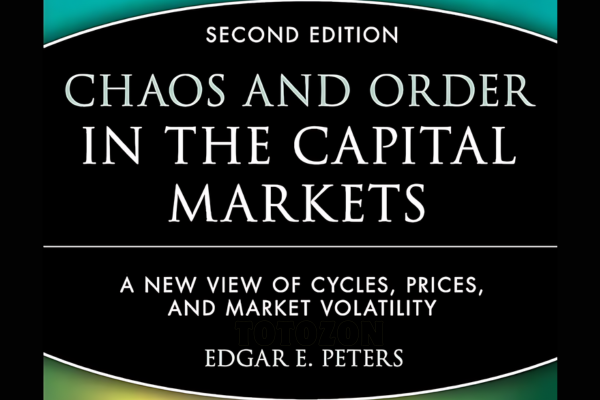Chaos and order in the Capital Markets with Edgar E.Peters
$6.00
File Size: Coming soon!
Delivery Time: 1–12 hours
Media Type: Online Course
Content Proof: Watch Here!
You may check content proof of “Chaos and order in the Capital Markets with Edgar E.Peters” below:

Chaos and Order in the Capital Markets with Edgar E. Peters
Understanding the intricate balance between chaos and order in the capital markets is a profound exercise, one that Edgar E. Peters has masterfully undertaken. His insights reveal how seemingly unpredictable elements can coexist with structured, logical financial theories. This exploration not only enlightens investors but also offers a framework for navigating the complex world of trading and investment.
Introduction: Unveiling Complexity
Capital markets are a spectacular display of human endeavor where billions of dollars exchange hands daily. These markets, driven by both individual and collective human actions, often exhibit patterns that seem chaotic yet operate within an ordered framework. Edgar E. Peters, in his seminal work, illustrates how chaos theory can be applied to understand these patterns.
The Foundation of Chaos Theory in Markets
What is Chaos Theory?
At its core, chaos theory studies the behavior of dynamic systems that are highly sensitive to initial conditions—a concept popularly known as the butterfly effect. In financial markets, this translates to how small changes can lead to vastly different outcomes, making market movements seem unpredictable and chaotic.
Applying Chaos Theory to Financial Markets
Peters argues that financial markets, although chaotic, are not completely random. They are bound by underlying principles that can be understood with the right analytical tools. This blend of unpredictability and structure defines the complexity of the market.
Order in Chaos: Identifying Patterns
Fractal Market Hypothesis
One of the key contributions of Peters is the Fractal Market Hypothesis, which applies fractal geometry to model market prices. Unlike the traditional Efficient Market Hypothesis, it acknowledges the markets’ chaotic nature and the tendency of patterns to repeat at various scales.
Implications for Traders and Investors
Understanding that markets are fractal allows traders to anticipate and react to patterns that might seem erratic but are actually self-similar across different time frames.
Strategic Implications
Risk Management
With an appreciation for both the predictable and unpredictable aspects of the markets, investors can better strategize their risk management tactics, focusing on adaptability and robustness in their portfolios.
Portfolio Diversification
The insights from chaos theory advocate for a more dynamic approach to diversification, one that exceeds traditional models and incorporates strategies resilient to the market’s complex behaviors.
Advanced Analytical Tools
Leveraging Technology to Harness Chaos
Advanced computing and algorithms have enabled traders to decode complex patterns and predict market movements more accurately, thereby turning chaos into a structured strategy.
Algorithmic Trading
Algorithmic trading systems that use chaos theory principles can execute trades at a speed and accuracy unattainable by human traders, exploiting inefficiencies and patterns before they disappear.
Conclusion: Embracing Complexity
The key takeaway from Edgar E. Peters’ exploration is that by understanding the chaotic yet structured nature of the markets, investors and traders can better navigate their investment strategies. It is not about predicting the market perfectly but understanding its nature and adapting to it.
FAQs
1. How does chaos theory apply to everyday trading?
Chaos theory helps in recognizing patterns in price movements that are not apparent through traditional analysis.
2. Can chaos theory predict stock market crashes?
While it cannot predict specific events, it can offer insights into the conditions that might lead to a market downturn.
3. Is the fractal market hypothesis widely accepted?
It is gaining recognition for offering a realistic view of market dynamics, unlike the older, more rigid models.
4. How do investors use chaos theory for portfolio management?
They use it to create portfolios that are more adaptable to the dynamic nature of the markets.
5. What is the future of chaos theory in financial analysis?
As technology advances, chaos theory’s role in financial analysis is expected to grow, providing deeper insights into market dynamics.
Be the first to review “Chaos and order in the Capital Markets with Edgar E.Peters” Cancel reply
You must be logged in to post a review.
Related products
Forex Trading
Forex Trading
Forex Trading
Forex Trading
Forex Trading
Forex Trading
Forex Trading
Forex Trading
Forex Trading
Forex Trading























Reviews
There are no reviews yet.